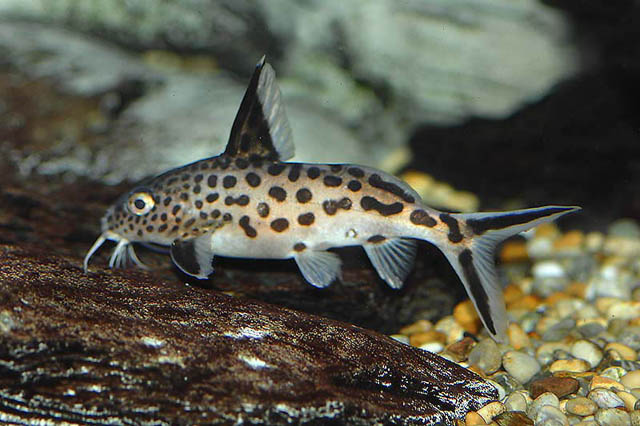|
Dorsal spines (total): 2-2; Dorsal soft rays (total): 7-7; Anal spines: 3-4; Anal soft rays: 6-8; Vertebrae: 34-34. Body is compressed laterally, with a convex predorsal profile, interrupted by a ridge formed by dorsal rim of eye; head somewhat depressed (Ref. 59365). Eye dorsolateral, ovoid, its diameter 64.2-81.0 % of snout length (Ref. 59365). Mandibular teeth 17-26, short and unicuspid, arranged in a single transverse row (Ref. 59365). Maxillary barbel without basal membrane, lacking branches or crenelations, and extending at least to base of pectoral fin; lateral mandibular barbel extending to point just short of anterior margin of pectoral girdle, with 4-5 non-tuberculate branches, lacking secondary branches; medial mandibular barbel 1/2 to 2/3 length of lateral barbel, with 4-5 pairs non-tuberculate branches, lacking secondary branches (Ref. 59365). Dorsal fin spine long, striated, nearly straight, terminating in short, white filament; anterior margin of fin spine with 0-3 small serrations distally; posterior margin with small serrations distally (Ref. 59365). Pectoral fin spine roughly equal in length to dorsal fin spine, striated, slightly curved, terminating in short, white filament; anterior spine margin with many small, antrorse serrations; posterior margin with large, retrorse serrations along entire length (Ref. 59365). Adipose fin short, poorly developed, margin convex (Ref. 59365). Body with large spots, fin spines brown to black (Ref. 59365). |

